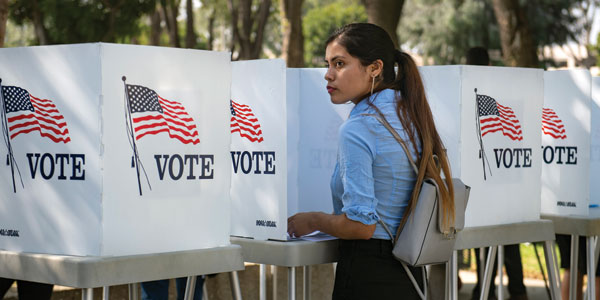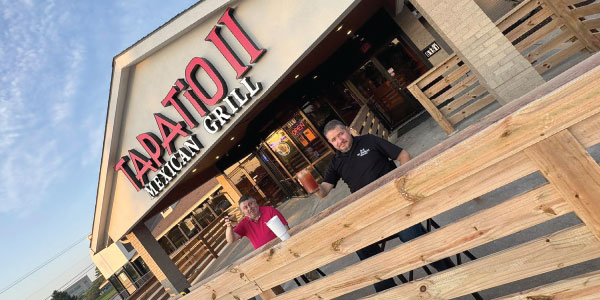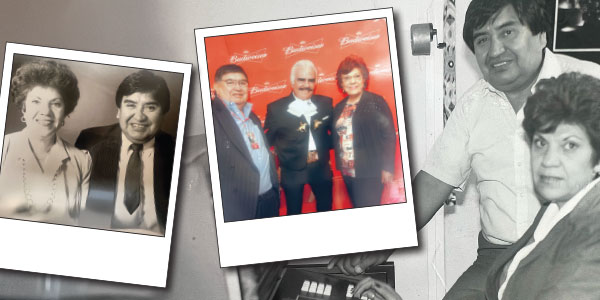
By Jorge Ramos
MIAMI — Every four years, without fail, the two mainstream political parties try to win over Latino voters for their respective presidential candidates. The reason is clear: There is no route to the White House without the support of Latinos.
This wooing is carried out with cynicism and fueled by the political ambitions of all concerned. Republicans and Democrats alike seem to rediscover
us every four years, then forget about us until the next election. It’s such an open and flagrant display of opportunism that some people have called it the Christopher Columbus syndrome.
Historically, Latinos are more likely to vote for Democrats than for Republicans. According to a survey published by Latino Decisions in August, 66 percent of those registered to vote lean toward Joe Biden this year, compared to 24 percent who favor President Trump. If Mr. Trump can’t attract more Latino voters, he is likely to lose the election.
Given the growing number of Latino voters, the courting process has also become more sophisticated.
Years ago, a candidate need only toss out a few words in Spanish — Ronald Reagan said little more than “Muchas gracias” in his speech proclaiming National Hispanic Heritage Week, just weeks before the 1984 election — but today specific promises are required, like the one made by Barack Obama during his 2008 campaign to introduce comprehensive immigration reform in Congress — a promise he did not keep.
But regardless of who wins on Nov. 3, Latinos will shape the future.
In 2020, the ritual is in full effect. President Trump boasted about the record low unemployment
rates among Latinos before the pandemic. And a naturalization ceremony at the White House was featured during the Republican National Convention, showcasing Mr. Trump’s alleged commitment to America’s newcomers.
This stands in sharp contrast with his administration’s
actions: constant attacks on immigrants; separating more than 5,000 children from their parents at the Mexican border, even detaining some in cages; and trying to end protections for the 700,000 Deferred Action for Childhood Arrivals
recipients.
More recently Mr. Trump has taken to calling immigrants murderers and rapists again. No wonder one of those newly sworn-in Americans who attended the White House ceremony, Robert Ramírez, originally from Bolivia, wasn’t willing to say he would vote for Mr. Trump. “I will vote,” he told Univision, “but my vote is private.”
Democrats are also good at making promises, and lots of them. Their nominee has pledged something millions of Latino immigrants have been waiting decades for. “This is my promise to you,” Mr. Biden posted on Twitter. “On Day 1, I’ll send a bill to Congress that creates a clear road map to citizenship for Dreamers and 11 million undocumented people who are already strengthening
our nation. It’s long overdue.”
Yet when Mr. Biden was serving as vice president,
the Obama administration not only failed to offer comprehensive immigration reform, it deported over three million undocumented citizens. Mr. Biden’s promise is fundamental to making right that mistake and winning back the trust of the Latino community. Even so, those who think Democrats take Latino votes for granted remain wary, which could hurt turnout for Mr. Biden.
This year, a projected 32 million Latinos will be eligible to vote, making them the largest racial or ethnic minority ever to participate in a presidential
election. And for the first time, Latinos will outnumber Black voters, according to the Pew Research Center.
The power of Latino voters is evident in states such as Florida and Arizona. Had the Latino turnout been higher in those states in 2016, Mr. Trump might not be president. But over half of all Latinos eligible to vote didn’t do so, and consequently history was written in Michigan, Pennsylvania and Wisconsin.
Despite the racist insults he hurled at Mexican immigrants during his last campaign (“They are bringing drugs. They are bringing crime. They’re rapists.”) Mr. Trump won 28 percent of the Latino vote. Though not even close to the 66 percent that voted for Hillary Clinton, it was enough to win him the election. Clearly, even insults couldn’t convince that small slice of the Latino electorate that Mr. Trump, who promised economic opportunity, a wall and a crackdown on dictatorships in Cuba and Venezuela, was unfit for office.
I myself have surfed the great Latino wave. When I arrived in the United States in the early 1980s, fewer than 15 million Latinos lived in this country; now we number more than 60 million. And in less than three decades we will be at 100 million, according to estimates.
These numbers mean no candidate will be able to achieve power in the United States without Latino support. Karl Rove, chief adviser to President
George W. Bush, understood this perfectly. In 2004, Mr. Bush won 44 percent of the Latino vote, more than any other Republican presidential candidate ever. It was the first time Republicans tried to divide the Latino vote and prove the phrase attributed to Ronald Reagan: “Latinos are Republican. They just don’t know it yet.”
But instead of continuing their efforts to court Latino voters, Republicans turned their backs. As a candidate in 2016, Mr. Trump announced he would build his wall at the border, and that Mexico would pay for it. This is not how to win the hearts of Latinos.
The Latino vote is increasingly powerful, diverse and sophisticated. And in exchange for that vote, which can make or break a president, the Latino community expects concrete benefits. A few words in Spanish and a few empty promises are no longer enough.
At the end of the day, more than expecting Democrats and Republicans to pay attention to the major issues that concern Hispanics — jobs, education for their children, health insurance, immigration — it’s about having more political representation so that no one has to speak for us. We are more than 18 percent of the population and yet there are only four Latino senators.
The reality in United States politics today is that we have the power to open or close the doors to the White House. When it comes to Latino voters, this is the new meaning of that old campaign ritual.
___________________________________________________
Sin latinos no hay Casa Blanca
MIAMI — Cada cuatro años, sin excepción, los dos principales partidos políticos de Estados Unidos tratan de enamorar a los electores latinos para que voten por su candidato a la presidencia. El objetivo es claro: sin latinos no hay Casa Blanca.
Es un ritual predecible y, muchas veces, cargado de cinismo y ambición política. Es como si el Partido Republicano y el Partido Demócrata nos redescubrieran
cada cuatro años para, luego, olvidarse de nosotros hasta la siguiente elección. El espectáculo es tan obvio y desvergonzado que hasta le han dado un nombre: el síndrome de Cristóbal Colón.
Y conforme crece el número de votantes hispanos, el proceso de convencimiento se ha hecho mucho más sofisticado. Lo que comenzó con el candidato pronunciando unas palabritas en español —Ronald Reagan dijo unas cuantas palabras, entre ellas “muchas gracias”, en un discurso dirigido a latinos a menos de dos meses de las elecciones de 1984— pasó a convertirse en promesas muy específicas, como la que hizo Barack Obama antes de las votaciones de 2008, cuando dijo que presentaría al congreso una reforma migratoria (algo que, finalmente, no cumplió).
Históricamente los latinos han votado más por los demócratas que por los republicanos. Y en esta elección,
Joe Biden tiene el 66 por ciento de la intención de voto de los hispanos frente a un 24 por ciento para Trump, según una encuesta de Latino Decisions de mediados de agosto. Si Trump no logra aumentar el número de votantes latinos, es muy posible que pierda la reelección. Pero independientemente de quien gane el 3 de noviembre, el futuro es hispano.
En 2020, el ritual está en todo su apogeo. El presidente Donald Trump presume que, antes de la pandemia, los hispanos tuvieron los índices de desempleo más bajos de la historia. Y como parte de los eventos de la Convención Nacional Republicana, Trump participó en una ceremonia de naturalización en la Casa Blanca con cinco nuevos ciudadanos para demostrar su compromiso con los inmigrantes.
Pero esto contrasta con un gobierno que durante los últimos años ha atacado constantemente a los inmigrantes:
según algunas organizaciones ha separado a más de 5000 niños de sus padres en la frontera, puso a algunos de esos menores en jaulas, intentó sin éxito el terminar con el programa que protege a más de 700.000 dreamers y recientemente volvió a referirse a los inmigrantes como “asesinos” y “violadores”. No extraña que uno de los cinco nuevos ciudadanos estadounidenses de la ceremonia en la Casa Blanca —el boliviano Robert Ramírez— no quisiera decir si votaría por Trump. “Voy a votar”, dijo en una entrevista, “pero mi voto es privado”.
Los demócratas también prometen. Y mucho. Su candidato presidencial, el exvicepresidente Joe Biden, prometió lo que millones de inmigrantes latinos han estado esperando por décadas. “Esta es mi promesa para ustedes”, escribió en un tuit. “En mi primer día enviaré una propuesta al congreso para que haya un camino a la ciudadanía para los dreamers y para los 11 millones de indocumentados que fortalecen nuestra nación. Hace mucho debió hacerse”.
El gobierno de Obama-Biden no cumplió con su promesa y, además, deportó a más de tres millones de indocumentados en ocho años de gobierno. La nueva promesa de Biden es fundamental para corregir un error del pasado y recuperar la confianza de los latinos. Pero levanta sospechas entre los que creen que el Partido Demócrata da por seguro el voto de los latinos.
Tanto Biden como Trump tienen razón en tratar de atraer a los votantes latinos; ellos podrían escoger al próximo presidente de Estados Unidos. Este año habrá 32 millones de votantes hispanos elegibles para votar, más que nunca y, por primera vez, más incluso que los votantes negros, según el Pew Research Center.
El poder del voto latino es evidente en estados como Florida y Arizona. Si más hispanos hubieran salido a votar en esos dos lugares en las elecciones de 2016, posiblemente Trump no sería presidente hoy. Pero más de la mitad de los latinos elegibles para votar en todo el país no lo hicieron y la historia se escribió en Míchigan, Pensilvania y Wisconsin.
A pesar de sus insultos racistas contra los inmigrantes
mexicanos durante la pasada campaña —“Traen drogas, traen el crimen, son violadores”—, Donald Trump obtuvo el 28 por ciento del voto latino. Mucho menos que el 66 por ciento obtenido por Hillary Clinton pero suficiente para ganar la elección.
Claramente para esos votantes hispanos, los insultos de Trump contra los inmigrantes y contra las mujeres no descalificaron a un candidato que ofrecía oportunidades económicas, un muro y mano dura contra las dictaduras de Cuba y Venezuela.
A mí me ha tocado surfear la gigantesca ola latina. Cuando llegué a Estados Unidos, a principios de los años ochenta, había unos 14,5 millones de hispanos. Ahora somos casi 61 millones. Y, según algunas proyecciones, en menos de tres décadas llegaremos a los 100 millones de habitantes.
Esto significa, políticamente, que nadie podrá ocupar un puesto de poder en Estados Unidos sin el voto o el apoyo de los latinos. Karl Rove, el principal
asesor del expresidente George W. Bush, lo entendió perfectamente: lograron identificar que en el país se estaba realizando un cambio demográfico importante. En 2004, Bush obtuvo el 44 por ciento del voto latino, más que cualquier otro candidato presidencial republicano. Fue la primera vez en que el Partido Republicano aspiró a dividir por la mitad el voto latino y materializar la frase atribuida a Ronald Reagan: “Los latinos son republicanos. Sólo que no lo saben todavía”.
Pero en lugar de seguir buscando el voto latino, los republicanos le dieron la espalda. Por ejemplo, el candidato presidencial Mitt Romney propuso la “autodeportación” de indocumentados en 2012 y Trump, cuatro años después, anunció la construcción de un muro en la frontera que pagaría México. Así no se gana el alma y el respeto de los latinos, muchos de los cuales son inmigrantes o tienen su origen en América Latina.
El voto latino es cada vez más poderoso, diverso y sofisticado. Y a cambio de ese voto —que puede poner o quitar a un presidente— la comunidad espera a cambio algo concreto.
No sólo palabritas en español y promesas vacías. Al final de cuentas, más que esperar que demócratas y republicanos le hagan caso a los principales asuntos que preocupan a los hispanos —trabajos, educación para sus hijos, seguro de salud, migración— de lo que se trata es tener mayor representación política para que nadie tenga que hablar por nosotros. Somos más del 18 por ciento de la población en Estados Unidos y sólo tenemos cuatro senadores latinos. Tenemos que ir de grandes números a un pedacito de poder.










